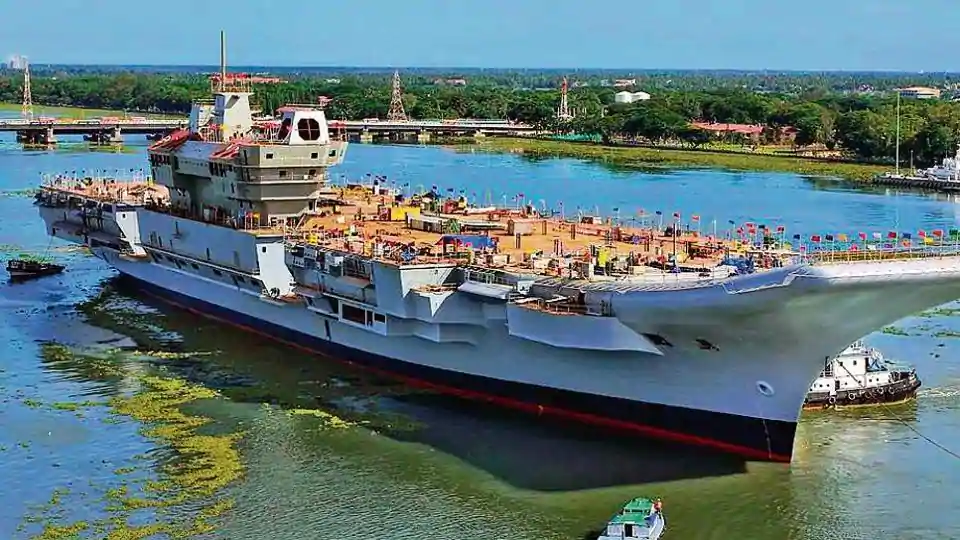
SOURCE: HT
The National Investigation Agency (NIA) investigated at least 6,500 people and conducted field verifications across least 14 states for nine months to catch two thieves who stole critical electronic components, including processors, Random Access Memory (RAM) and Solid State Drives from aboard INS Vikrant – India’s first Indigenous Aircraft Carrier (IAC), under construction at the Cochin Ship Yard Limited (CSL).
The theft took place sometime between July and September 2019 and it was suspected that there was a larger espionage network at work as the solid state drives went missing from five MFCs (multi function control) processors, critical equipment on a carrier.
The NIA was handed over the probe on September 26, 2019. The agency found that 1,500 to 2,000 people worked on the aircraft carrier during the day; 600 to 700 worked overtime, after 6 pm; and 200 to 300 worked through the night.
“Frisking all the persons entering or leaving the vessel, at the gangways, was not possible, while footage from two CCTV cameras installed on the gangway, was of low quality and hence not amenable to any technical analysis,” said an officer at the agency who didn’t want to be named.
NIA officers, along with Kerala police, prepared a list of employees of CSL, Bharat Heavy Electricals Limited (BHEL), Work Oversight Team (WOT) of Indian Navy and contractor Inelmech who had authorised access to INS Vikrant.
A list of 3,638 contract employees who entered the shipyard between August and September 2019, besides those who had passes to work, and a total of 195 contractors was created. Teams were constituted to examine everyone.
Everyone was subjected to layered voice analysis (LVA) – a technology used to identify the underlying emotion of a person, regardless of their language and tone of the speech. LVA technology uses bio-markers to trace the genuine emotion reflex that reveals the true sensations and feelings of a person. LVA was also conducted on 22 people no longer in India, using VoIP (Voice over internet Protocol) but nothing suspicious was found, the officer added.
Several NIA?teams travelled to 14 states — Tamil Nadu, Karnataka, Telangana, Andhra Pradesh, Maharashtra, Madhya Pradesh, Jharkhand, Uttarakhand, Chhattisgarh, Odisha, Bihar, Rajasthan, West Bengal and Gujarat to conduct field verifications about former staff of CSL?and their fingerprints were collected. By April 2020, finger/palm prints of 6,014 people were examined at the Single Digit Bureau, Kochi City to match with the seven prints lifted from the crime scene but it didn’t yield any result. Desperate to get a breakthrough, NIA announced a reward of ?5 lakh for any information.
Meanwhile, finger/palm prints of more people who entered INS Vikrant were examined and by June 3 a total of 6,504 prints were checked, said a second NIA?officer.
On June 3, the owner of Maxeve Engineering Constructions Pvt , engaged in painting work at INS Vikrant from September 2018 till 2019 informed the agency that some of his staff was involved in petty theft of power tools. Two employees, Sumit Kumar Singh, a native of Munger (Bihar) and Daya Ram, native of Hanumangarh (Rajasthan) came under the scanner after the right palm impression of Singh matched with one of the lifted prints. They were arrested on June 10. One stolen drive and a RAM was also recovered from Sumit’s place.
Investigations revealed that they sold one processor over OLX in September 2019; this was recovered from the buyer.
Both were chargesheeted in September.






